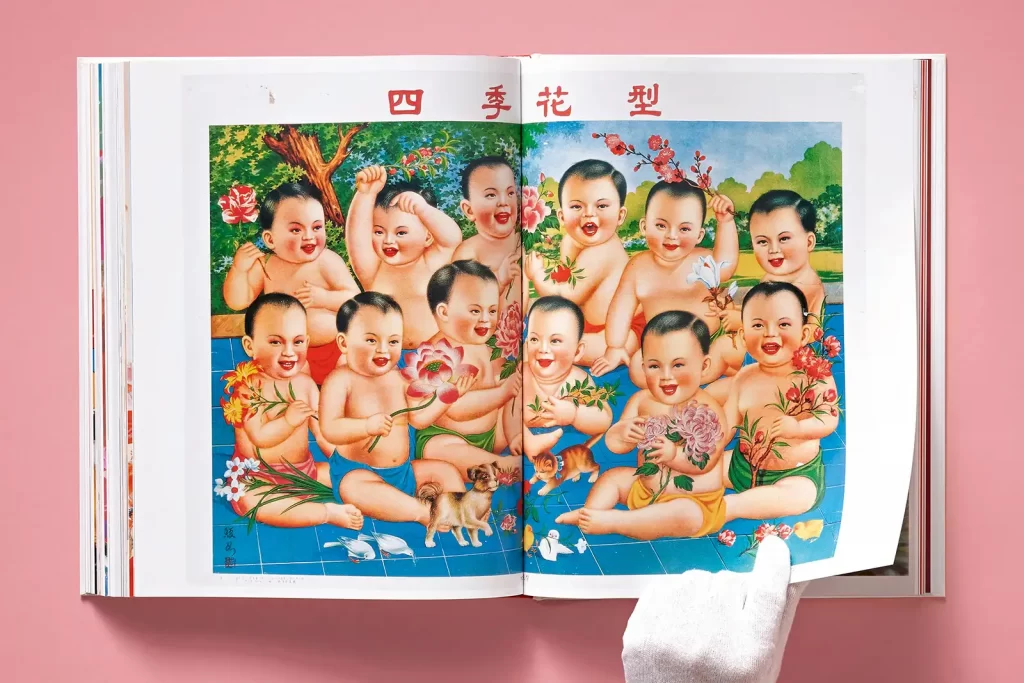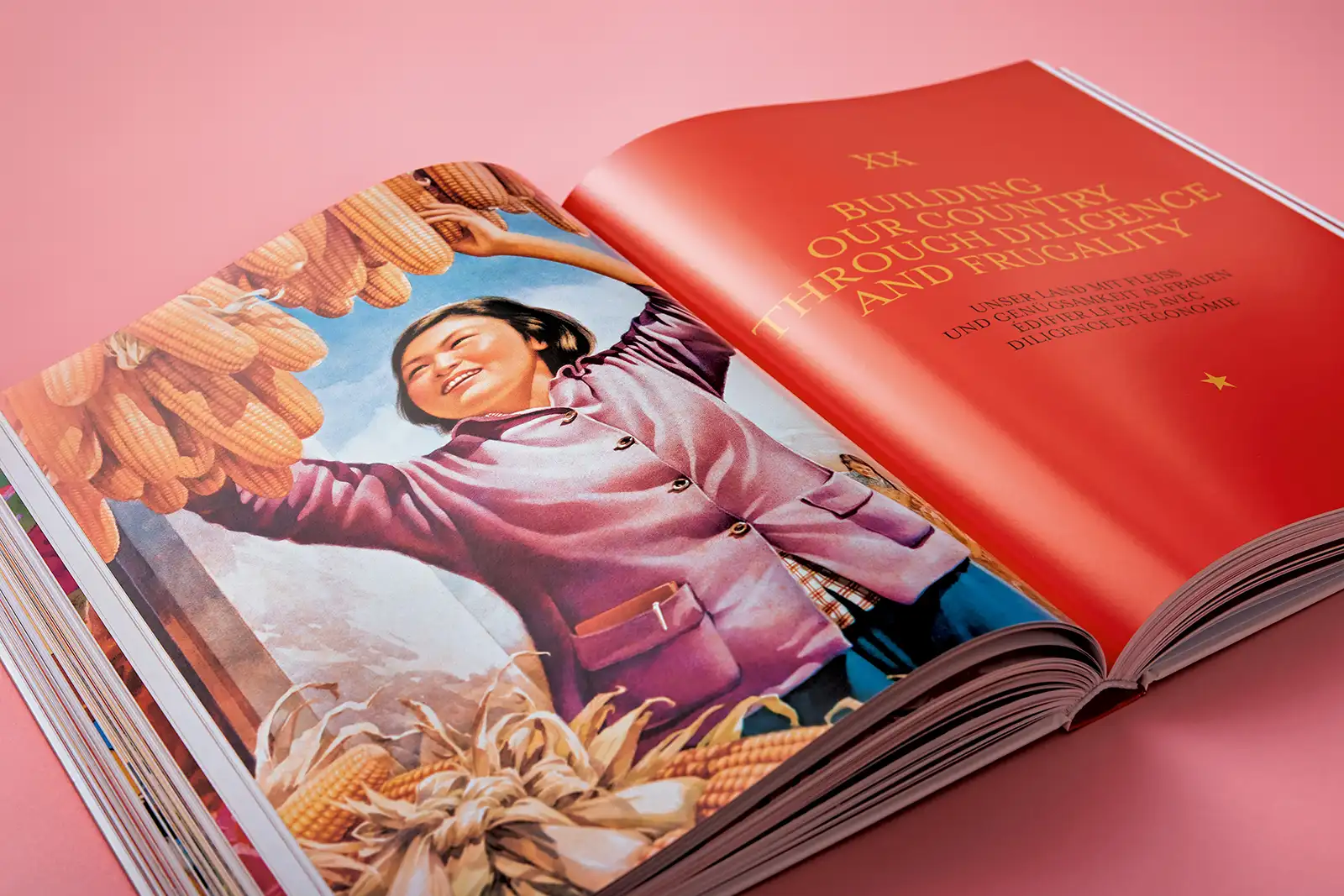The power of posters: Throughout its history, the mighty People's Republic of China has often used the versatile medium as a vehicle for political communication. An impressive and unique collection has now been published by Taschen as a large-format illustrated book.

Great and creepy
Nowadays, the Chinese government uses influencers or its own foreign broadcaster CGTN, China Global Television News, to paint an idyllic picture of the country. The German embassy in Brussels reported that the Chinese government has "a broad toolbox for manipulating the global information system".
The XL illustrated book "Chinese Propaganda Posters" by Taschen, on the other hand, is dedicated to the period between the founding of the People's Republic in 1949 and the early 1980s. An era without social media and TV channels, but with an abundance of impressive propaganda posters, the compilation of which, according to The Independent, appears "grand and creepy in equal measure".
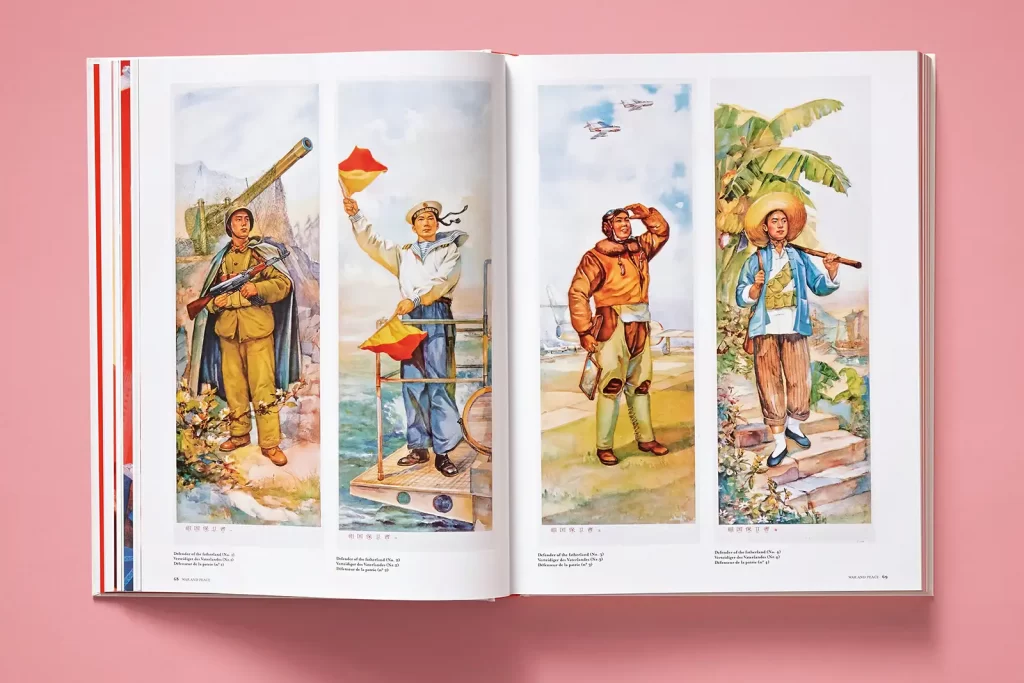
The imagination of a generation
The co-authors are Stefan R. Landsberger , who holds a doctorate in sinology, and the renowned poet Duo Duo, together with the Chinese-American writer Anchee Min, who herself grew up in Mao's China and, as a passionate party supporter, even played a leading role in a film by Mao's wife Jian Ching. After emigrating to the USA in 1984, she wrote the bestselling biography "Becoming Madame Mao". In it, she traces the personality and life of Jiang Qing, who was a driving force behind the Cultural Revolution and attracted the hatred of the population.
In her very personal introduction, Anchee Min talks about her first encounter with the propaganda posters: "My passion for the posters was awakened when I was eight years old. One day I brought a picture of Chairman Mao home from school. Although I didn't know that the Cultural Revolution had started
, I took part in it through this act - I took my mother's Peace and Happiness painting of children playing in a lotus pond off the wall and replaced it with the Mao poster." In her eventful life, she felt the consequences of the Cultural Revolution, like millions of other Chinese people, whose origins for her can also be found in the posters. "Max Gottschalk's collection of Chinese propaganda posters is unique and impressive," she continues. "The posters show the imagination of an entire generation and reflect an important period of Chinese history that is often misrepresented. A picture is worth a thousand words, so let the pictures speak!"
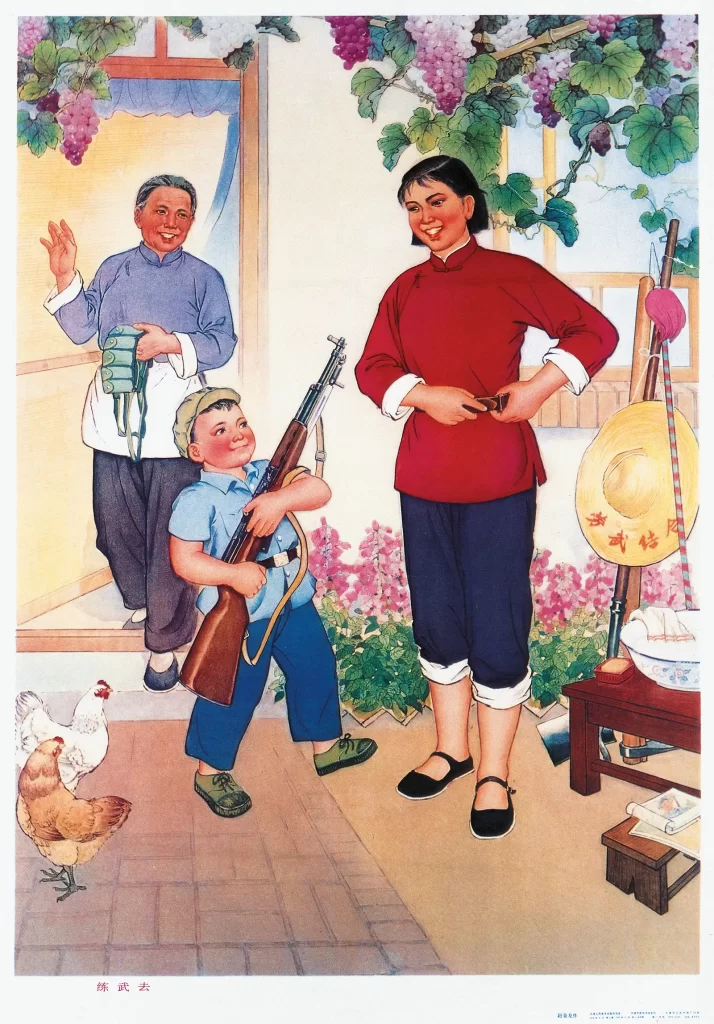
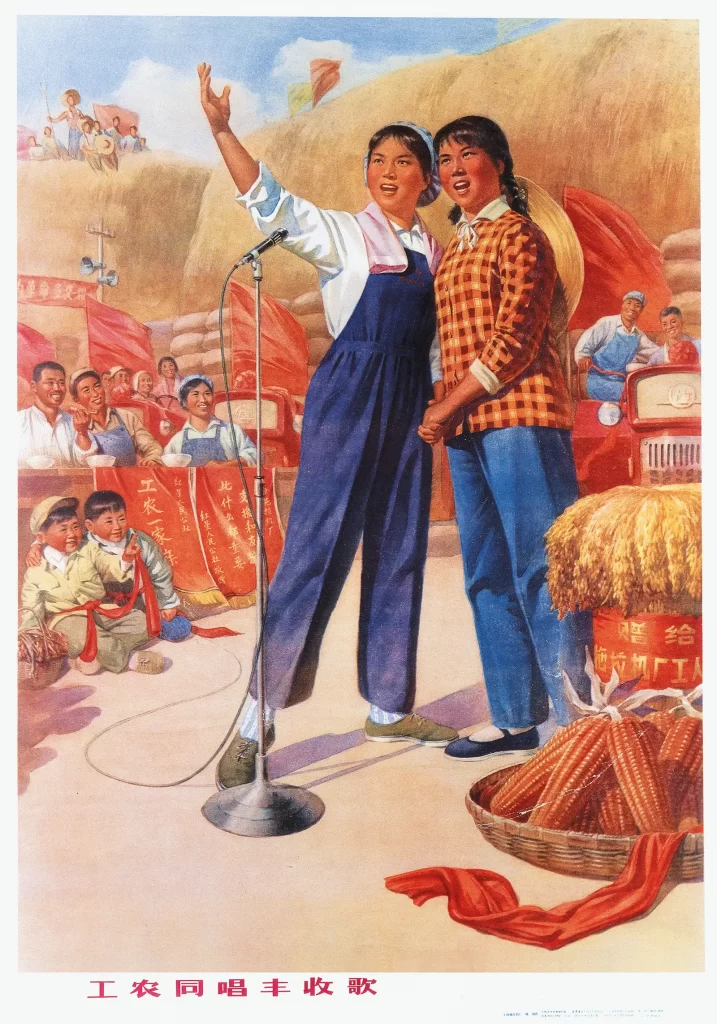
Ubiquitous posters
Mao's domestic censorship was aimed at suppressing anti-regime views and, to put it mildly, presenting the government in a favorable light. Moreover, Mao became a stoic superhero on his posters and was portrayed as a great teacher and leader. The pictures show him not only in his numerous brilliant deeds, but also in completely everyday, seemingly banal situations: inspecting factories, smoking a cigarette with field workers, in a bathrobe on the banks of the Yangtze, standing on the bow of a ship or hovering over a sea of red flags. His red face, which seems to emit rays of light in all directions in the pictures, is particularly memorable.
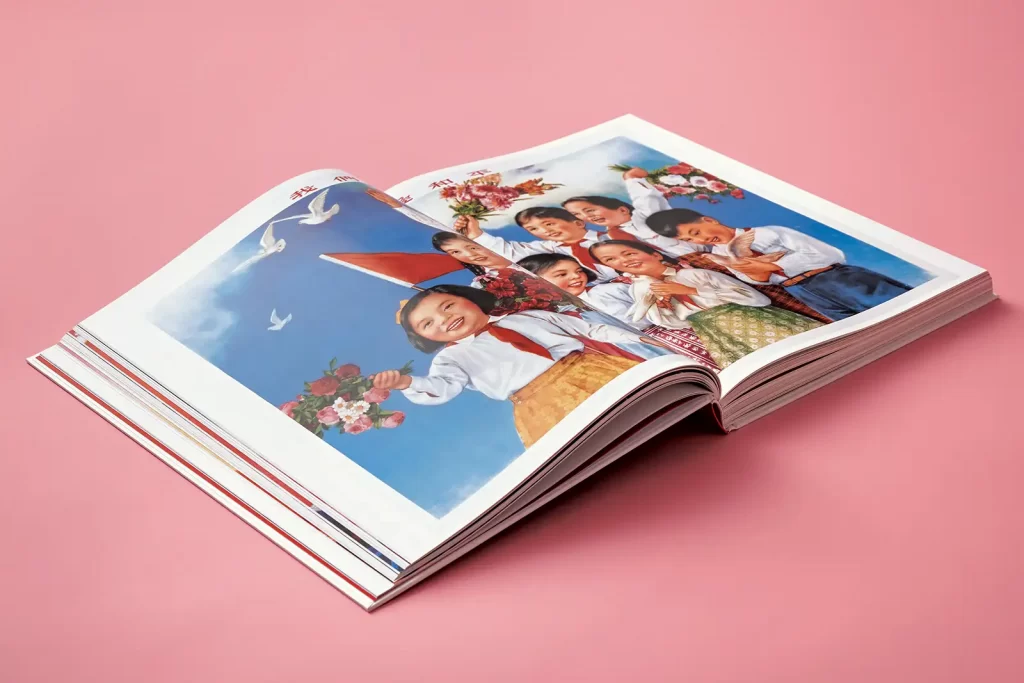
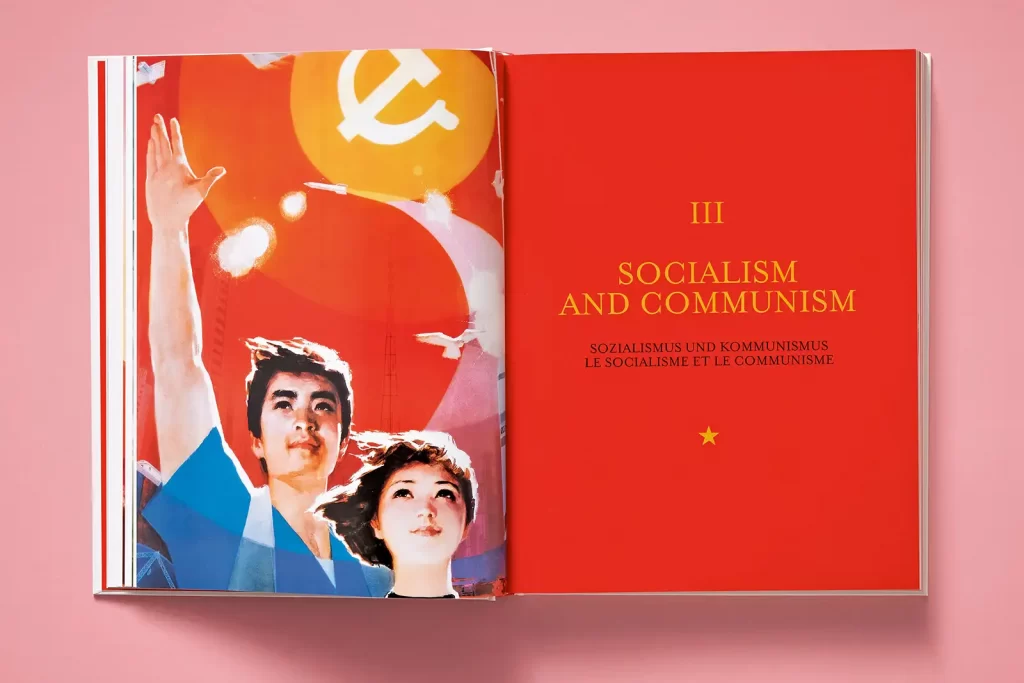
Together towards Utopia
But it was not only the great Chairman Mao Zedong who was omnipresent in the form of propaganda posters between 1949 and the early 1980s. The ideal image of the population was also depicted in large numbers, in a manner familiar to us from Nazi propaganda: strong, attractive women, men bursting with health and pride with ageless faces, radiant children. The figures depicted how Mao wanted his people to behave in a morally correct manner and how enthusiastic they should be about him. How much they seemed to look forward to the wonderful future of their communist country. Together with the leader towards utopia.
In addition to a spectacular selection of propaganda artworks, some of which are extremely rare, the book also includes other cultural artifacts that depict the social ideal of this era.
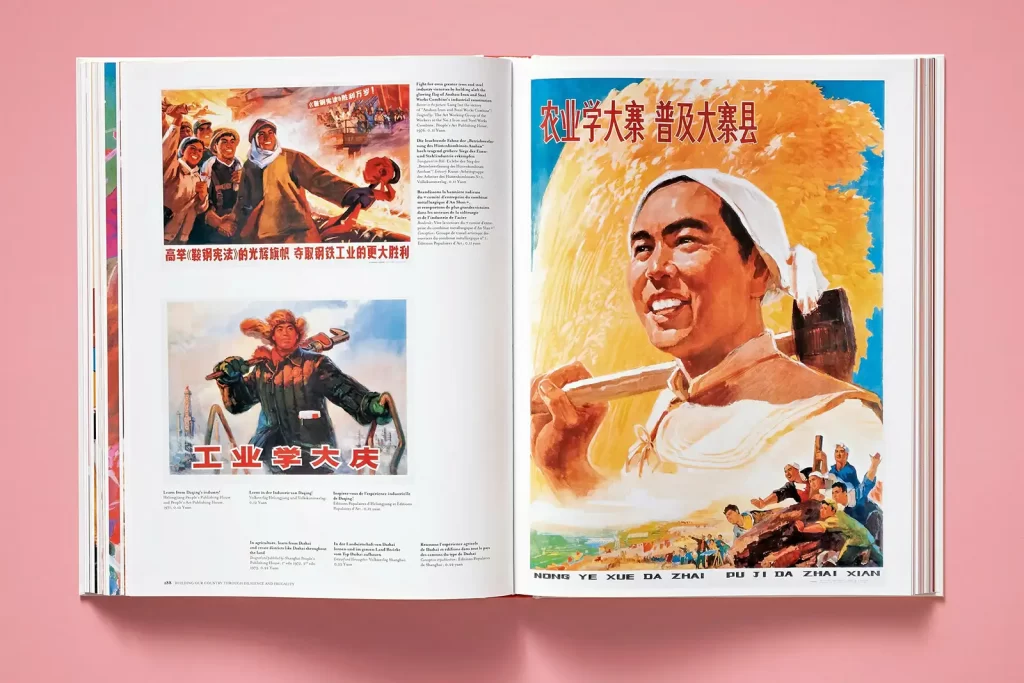
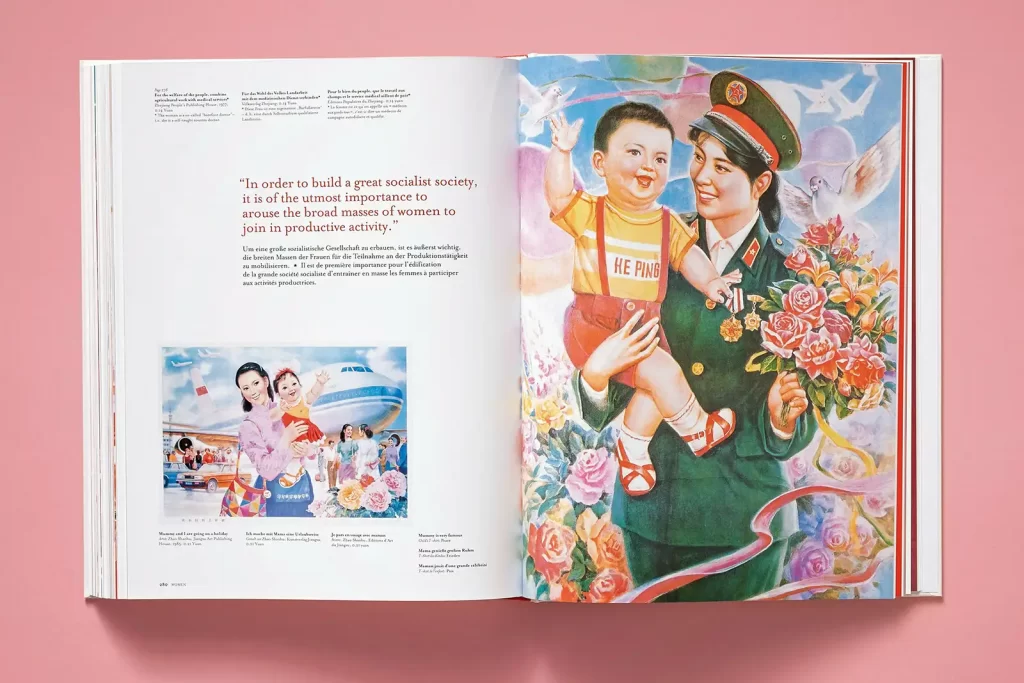
Facts and fiction
But not everyone was impressed by the meticulously designed posters. "I am a lucky man. I got to know Vincent van Gogh and Picasso when I was 20. Since then, I've never been able to force myself to develop an inner relationship with a poster," writes the poet Duo Duo in one of his text contributions. "When I rode my bike alone under the ever-watchful gaze of our guide past the walls covered with posters of big and strong workers, farmers and soldiers, I felt like a character from Kafka's novels. From then on, I began to write and to be lonely. From then on, my life in exile began." But he also describes feeling numb inside after looking at the 400 posters. The constant message of serving the party and the people must have seemed absurd to him after so many years out of the country, but many did not succeed in emigrating.
The book is divided into various chapters, all of which show the extent to which propaganda posters impacted on all areas of life: working life, family structure, culture and art, the military and education. Many of them appear almost naive in their design. "Black lines formed outlines that were painted in bright pink, red, yellow, green and blue," Stefan R. Landsberger describes them. "These works created a kind of faction - a cross between fact and fiction - by emphasizing the positive and polishing up anything negative. They became propaganda art through their political slogans." However, he also outlines the decline of poster art in his text. "Some political posters are still available, but only collectors from China or the West seem to be interested in them. The images that once shaped the image of China have disappeared."
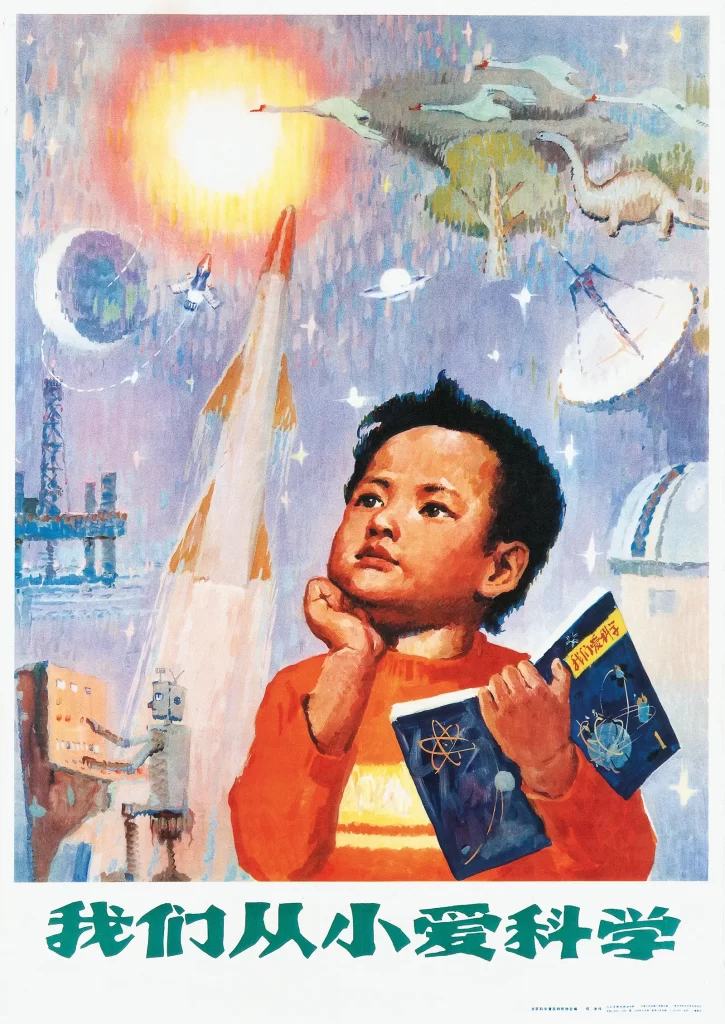

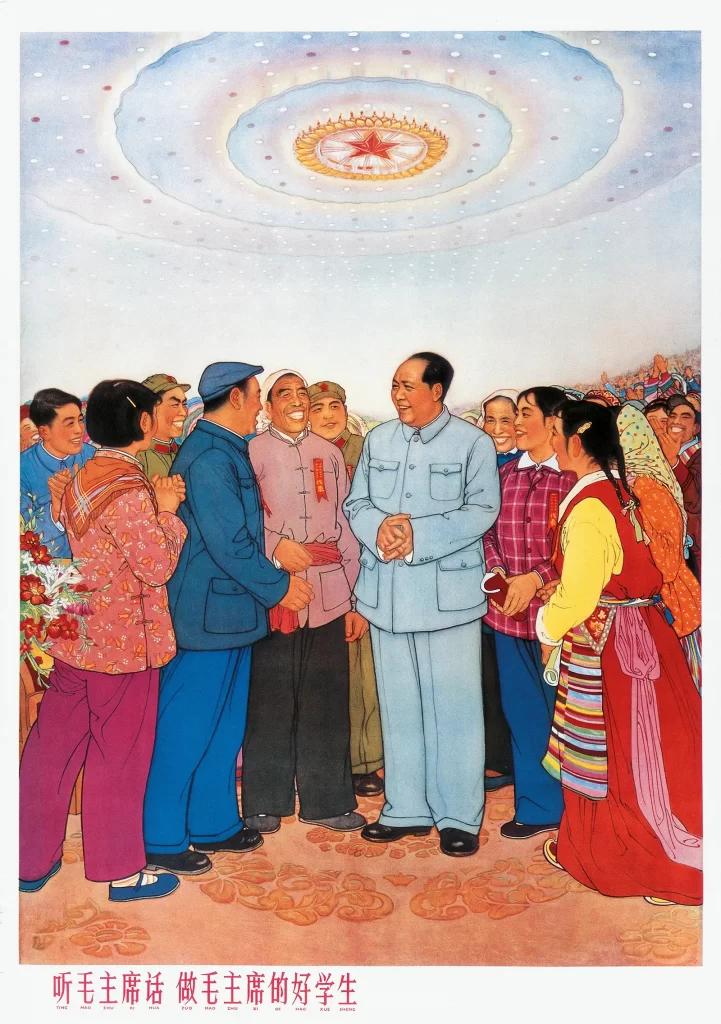
An impressive document
This illustrated book brings together rare key works from Max Gottschalk's huge collection and conveys a tremendously detailed picture of the utopia to which the People's Republic clung. Whether depicting agricultural workers, production lines or schoolchildren eager to learn, the figures and scenes represent a political document that will resonate for a long time and prove how deeply campaigns and communication design can affect the everyday life of a population.
Chinese Propaganda Posters
Hardcover, 26 x 34 cm, 2.73 kg, 320 pages
€ 50
Multilingual edition:
German, English, French
www.taschen.com
